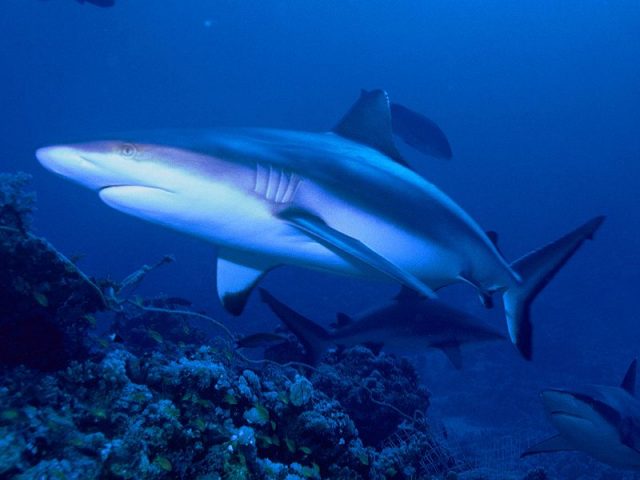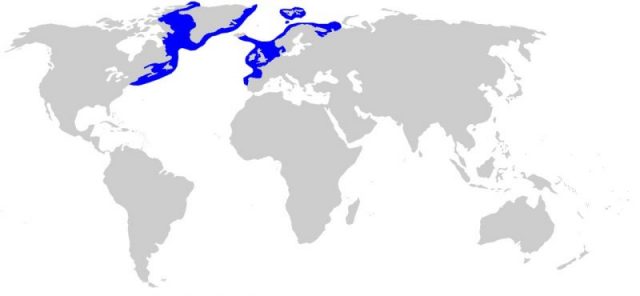According to new research carried out by scientists, the Greenland shark, also known as the grey shark or gurry shark, has beaten existing longevity records on Earth after a representative of the species was estimated to be as old as 512 years, claiming status of world’s oldest vertebrate.
The Greenland shark may look ugly and lumpish, and the creatures can seem almost repulsive, like the deformed sea monsters seen in some of the Pirates of the Caribbean films. They are among the largest predator sharks that thrive in the ocean.
While they grow to a great size, Greenland sharks are notoriously difficult to locate and catch. Consequently, many questions concerning these lords of the waters have remained a mystery, such as where precisely they mate and what is the exact arrangement of their population. For decades, one of the most pressing questions for scientists and biologists has been, how long do they live?

The earliest studies that attempted to answer the latter question were conducted in the 1930s. Eventually, it was determined that the lifespan of a Greenland shark might be well beyond our comprehension, thanks to their slow metabolism and the deep, dark, and icy-cold waters of the Arctic Ocean or the North Atlantic where they live.
Usually, when determining the age of other kinds of sharks, scientists examine the fin spines as well as the shark’s vertebrae. However, the body of the Greenland shark is different: it does not have any hard tissue. Even their vertebrae are soft. That has made it quite impossible to determine the exact age of a representative of this species. Up until now.
New methods have enabled scientists to trace the presence of radiocarbon in the lenses of the sharks’ eyes. Due to this, researchers were able to determine an age of up to 512 years for one specimen, and the study explaining these findings was recently published in the journal Science.
Greenland sharks need some 150 years to reach maturity; having a slow metabolism means they are capable of maintaining a growth rate of only approximately 0.39 inches per year. They usually reach 16 to 17 feet in length, but the research team was lucky to come across a specimen as long as 18 feet.
In the attempt to determine the age of the 18-foot-long specimen, researchers took advantage of the new method, and they reportedly performed eye lens and cornea analysis on the sharks. With the use of mathematical modeling, they have proposed that the shark is up to 512 years old.

The shark was only one of 28 specimens which were analyzed, and the average lifetime of all 28 was estimated as an astonishing 390 years. Presuming that all of this is true, the oldest vertebrate on the earth was born in 1505, several years before the Spaniards started colonizing Florida, or several decades before Isaac Newton delivered his ground-breaking contributions to science.
Researchers clarified that the method they used does not exclude a fair sized margin of error. In the case of the 18-foot shark this could be up to 120 years. In other words, the age of the shark could be in between 272 and 512 years. But as Julius Nielsen, a marine biologist from Denmark who took part in the research and is one of the study co-authors, explains: “even the lowest part of the age range–at least 272 years–still makes Greenland sharks the longest-living vertebrate known to science.”
This breakthrough in understanding the longevity of the Greenland sharks would not have been possible without work previously done by Danish scientists, who worked on developing the eye-lens analysis method for quite a long time. The method makes use of a type of protein found in the lens of the sharks’ eyes, and also in the eyes of humans, called crystallines. It is known that the crystallines, like any other type of organic molecules, can take carbon into their composition, which includes the naturally occurring radioactive carbon isotope, carbon-14. It is the amount of carbon-14 present in the tissue that is measured in radiocarbon dating methods.
The levels of carbon-14 isotope present in the oceans was significantly affected by nuclear weapon tests carried out during the Cold War era, and, surprisingly, researchers have now used that as a time-daaring asset. “Nielsen et al. used the pulse of carbon-14 produced by nuclear tests in the 1950s—specifically, its incorporation into the eye during development—to determine the age of Greenland sharks,” reads part of the abstract of the study. “Only the smallest sharks (220 cm or less) showed signs of the radiocarbon bomb pulse, a time marker of the early 1960s.“
